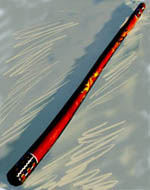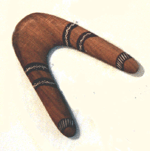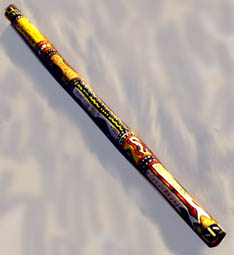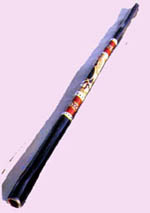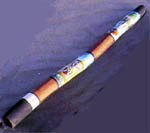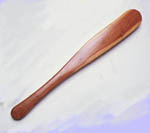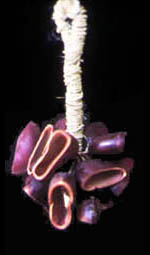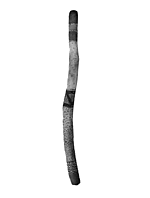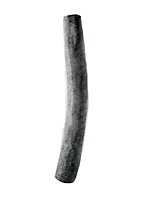Discovernet: Didjeridu
How much do you know about the didjeridu? Have you ever seen it being played? Do you know how they are made? The didjeridu is internationally recognisable as a significant part of Aboriginal culture but even so, many non-Aboriginal people know very little about this ancient instrument. The name didjeridu is not an Aboriginal name - it is a word used by Europeans and does not reflect the instrument's many different forms. There are many names, each given by a different Aboriginal language group. A few of these are Bambu, Bombo, Kambu, Papuu, Garnbak, Illpirra, Martba, Jiragi and Yiraki. Try saying all these names aloud. The traditional form of the instrument originated in northeast Arnhem Land and the Eastern Kimberly, although variations can now be found all over Australia. They are made from hollow pieces of wood up to two and a half metres in length, although the preferred size is about one metre. There is also a larger version of the instrument which is only used in ceremonial circumstances. The wood most commonly used is Stringy Bark, although other types of timber can be used, including bamboo. Amazingly, the didjeridu is traditionally made from trees that have been hollowed by termites! Aboriginal craftsmen then carefully chip away the interior to create an instrument that produces just the right sound. However, today many didjeridus are artificially made from non-traditional materials. This is because of the increasing popularity of the instrument and the production of didjeridus for the tourist market. The sound emitted by a didgeridu is a long drone, although skilled players can also produce sounds which mimic animals and birds. The droning sound is made by covering one end with your mouth and then forcing air between your lips, which vibrate to create the distinctive noise. The mouthpiece is covered in beeswax to protect your lips from the vibrations. No two didjeridus are exactly the same size and shape, so each produces a unique tone. In addition, different sounds are achieved by varying the air pressure and the method of breathing. Very experienced didjeridu players are able to play the instrument for long periods of time using a special type of breathing called circular breathing. They take air in through the nose while breathing out of the mouth at the same time. You should try this to understand just how difficult it is! The didjeridu is very important to the Aboriginal people of northeast Arnhem Land, the Yolngu, as this is one of the areas from where the the didjeridu originates. Here, the instrument is known as the Yidaki, and traditional Songmen and Yidaki players are held in great reverence. They play an important part in ceremonies and rituals that take place when the Community gathers at special occasions such as seasonal honourings and funerals. The didjeridu is sacred and those who play it are held in high regard, as it is believed that if you have the skill needed to play the didjeridu, you have been chosen to do so. There are many aspects of Aboriginal culture that are considered private and cannot be repeated outside of the cultural group. This is true in regard to the didjeridu; some rhythms and melodies cannot be played in public as they are reserved for corroborees or business occasions. It is also traditionally forbidden in most regions for women to play the didjeridu. The didjeridu has been an integral part of Aboriginal culture for thousands of years. In recent times they have been increasingly used in contemporary music, as part of orchestras and even rock bands like Yothu Yindi. In these non-traditional contexts, the instrument's unique resonance and reverberation is instantly recognisable. Keep listening - you could hear a didjeridu anytime, anywhere!
|
|

